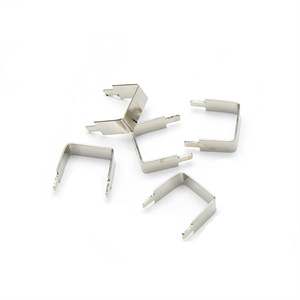The application of Fourslide Multi-Slides Stamping in communication equipment includes, but is not limited to, the following:
Electronic connectors: Manufacturing various types of connectors, such as board to board connectors, wire to board connectors, etc. These connectors usually require high-precision and complex shapes to ensure the stability and reliability of signal transmission.
Terminal and pin: It is used to connect the terminal, pin and other metal parts of electronic components and circuit board, and can realize high-precision and small size processing through the multi-stlide punching process.
Shields and Enclosures: Shields in communication equipment protect against electromagnetic interference, while equipment enclosures protect internal components. Multi-slip stamping enables the production of complex shaped, structurally specific shield and housing parts.
Antenna assembly: some metal parts of the antenna may be manufactured by this process to meet the performance and size requirements of the antenna.
Small metallic structures, such as fixings, brackets, etc., that support, fix, and connect other components within the communications equipment.
Multi-slide stamping process can produce metal parts with complex shapes, high precision and strict tolerance requirements, meeting the demands of communication equipment for small and precise parts. Meanwhile, the process is applicable to wire or strip stock materials, with high material utilization and production efficiency. However, the specific application will vary according to the design requirements of the communication equipment, the functional characteristics of the parts and the actual situation of the production process.
When using Fourslide Multi-Slides Stamping in communications applications, there are several key issues to note:
Material selection:
Materials with proper conductivity, corrosion resistance and mechanical strength shall be selected according to working environment and performance requirements of communication equipment. For example, for high frequency communication components, it may be necessary to select low resistance metal materials to reduce signal loss.
Consider the ductility and punchability of the material to ensure that no cracks or breaks occur during the process.
Precision control:
Parts in communication equipment often require extremely high dimensional and shape accuracy. Therefore, it is necessary to strictly control the manufacturing accuracy of the stamping die, the operation accuracy of the equipment and the process parameters in the stamping process, such as the stamping speed, pressure, etc.
Periodically maintain and calibrate the dies to prevent loss of accuracy due to die wear.
Surface quality:
The surface quality of parts will affect their electrical performance and connection reliability. Avoid surface defects such as scratches, pits, oxidation, etc.
Special surface treatment processes, such as electroplating, coating, etc., may be required to improve corrosion resistance and conductivity of parts.
